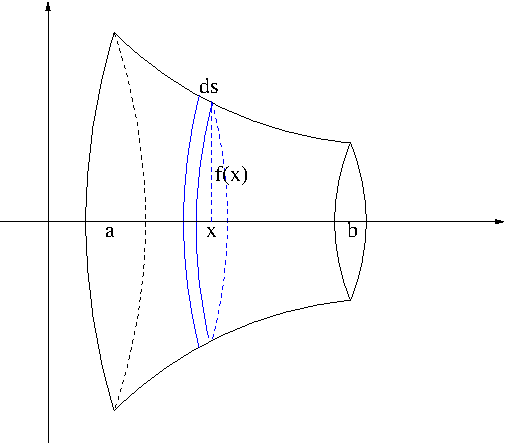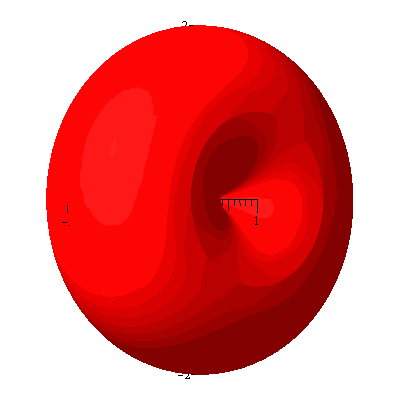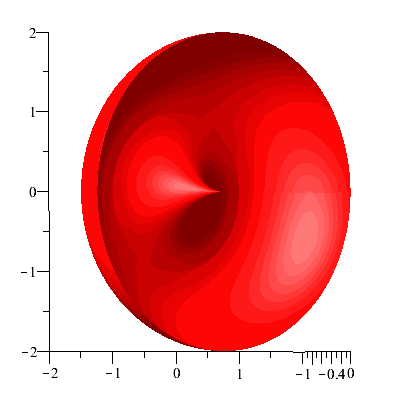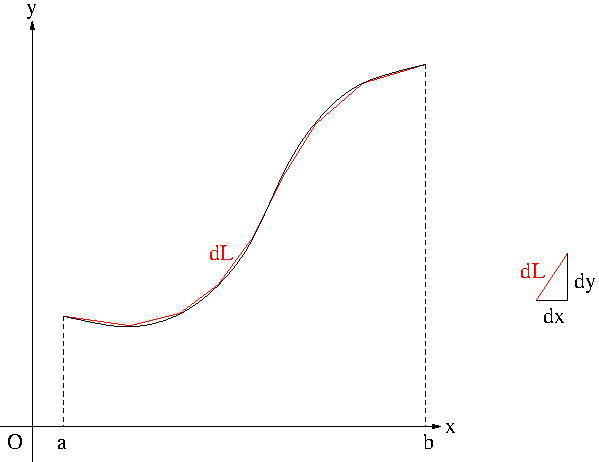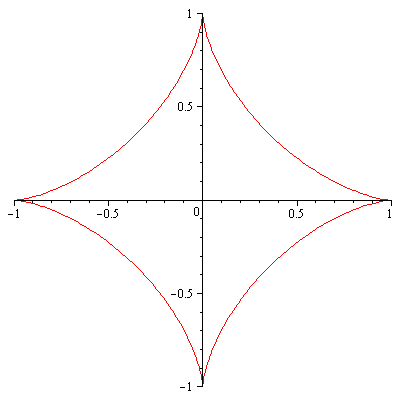If two functions $f(x)$ and $g(x)$ both approach zero as $x\to a$, the function $\frac{f(x)}{g(x)}$ is said to assume the indeterminate form $\frac{0}{0}$ at $x=a$. Regardless of the term, $\frac{f(x)}{g(x)}$ may approach a limit as $x$ approaches $a$. The following theorem named after the French mathematician G. F. A. de L’Hôpital (1661-1704) is useful for the process of determining this limit if it exists.
Theorem (L’Hôpital’s Rule). If the functions $f(x)$ and $g(x)$ are continuous in an interval containing $a$ and if $f'(x)$ and $g'(x)$ exist such that $g'(x)\ne 0$ in this interval (except possibly at $x=a$), then when $\lim_{x\to a}f(x)=\lim_{x\to a}g(x)=0$ (or equivalently $f(a)=g(a)=0$), we have $$\lim_{x\to a}\frac{f(x)}{g(x)}=\lim_{x\to a}\frac{f'(x)}{g'(x)}$$ provided the limit on the right exists.
Example. Evaluate $\lim_{x\to 0}\frac{\tan x}{x}$.
Solution. The limit is an indeterminate form $\frac{0}{0}$. By applying L’Hôpital’s Rule, we obtain $$\lim_{x\to 0}\frac{\tan x}{x}=\lim_{x\to 0}\frac{\sec^2x}{1}=1$$
The Indeterminate form $\frac{\infty}{\infty}$
If $f(x)\to\infty$ and $g(x)\to \infty$ as $x\to a$ (or $x\to\pm\infty$), the function $\frac{f(x)}{g(x)}$ is said to assume the indeterminate form $\frac{\infty}{\infty}$ at $x=a$ (or at $x=\pm\infty$). The limit of $\frac{\infty}{\infty}$ as $x\to a$ (or $x\to\pm\infty$) may still be found by L’Hôpital’s Rule if it exists.
Example. $$\lim_{x\to\infty}\frac{x^2}{e^x}=\lim_{x\to\infty}\frac{2x}{e^2}=\lim_{x\to\infty}\frac{2}{e^x}=0$$
Example. Evaluate $\lim_{x\to 0+}\frac{e^{-\frac{1}{x}}}{x}$.
Solution. Applying L’Hôpital’s Rule, we have $$\lim_{x\to 0+}\frac{e^{-\frac{1}{x}}}{x}=\lim_{x\to 0+}\frac{e^{-\frac{1}{x}}}{x^2}$$ While L’Hôpital’s rule can still be applied, we would accomplish nothing by doing so. This example shows that L’Hôpital’s rule may not necessarily leads to a desirable result. For the above example, the limit can be found by $$\lim_{x\to 0+}\frac{e^{-\frac{1}{x}}}{x}=\lim_{x\to 0+}\frac{\frac{1}{x}}{e^{\frac{1}{x}}}=\lim_{z\to\infty}\frac{z}{e^z}=\lim_{z\to\infty}\frac{1}{e^z}=0$$
The indeterminate form $0\cdot\infty$
If $f(x)\to 0$ and $g(x)\to\infty$ as $x\to a$ (or $x\to\pm\infty$), the function $f(x)g(x)$ is said to assume the indeterminate form $0\cdot\infty$ at $x=a$ (or at $x=\pm\infty$). If the limit of $f(x)g(x)$ as $x\to a$ (or $x\to\pm\infty$) exists, it may be found by writing $f(x)g(x)$ as $$\frac{f(x)}{\frac{1}{g(x)}}\ \mbox{or}\ \frac{g(x)}{\frac{1}{f(x)}}$$ and applying L’Hôpital’s rule.
Example.
- $\lim_{x\to\infty}xe^{-x}=\lim_{x\to\infty}\frac{x}{e^x}=\lim_{x\to\infty}\frac{1}{e^x}=0$.
- $\lim_{x\to 0}\sin 3x\cot 2x=\lim_{x\to 0}\frac{\sin 3x}{\tan 2x}=\lim_{x\to 0}\frac{3\cos 3x}{2\sec^22x}=\frac{3}{2}$.
The Indeterminate Form $\infty-\infty$
If $f(x)\to\infty$ and $g(x)\to\infty$ as $x\to a$ (or $x\to\pm\infty$), the difference $f(x)-g(x)$ is said to assume the indeterminate form $\infty-\infty$ at $x=a$ (or at $x=\pm\infty$). If the limit of $f(x)-g(x)$ as $x\to a$ (or as $x\to\pm\infty$) exists, it may be found by transforming the difference into a fraction by algebraic means and applying L’Hôpital’s rule.
Example. $\lim_{x\to 0}(\csc x-\cot x)=\lim_{x\to 0}\frac{1-\cos x}{\sin x}=\lim_{x\to 0}\frac{\sin x}{\cos x}=0$
Example. Evaluate $\lim_{x\to\infty}(x-\ln x)$.
Solution. While $x-\ln x$ assumes the indeterminate form $\infty-\infty$ at $x=\infty$, there is no algebraic means to transform it to a fraction. An indeterminate of the form $\infty-\infty$ such as the one in consideration may be evaluated by finding the limit of its exponential. Let $y=x-\ln x$. Then $$e^y=e^{x-\ln x}=\frac{e^x}{e^{\ln x}}=\frac{e^x}{x}$$ Hence, $$\lim_{x\to\infty}e^y=\lim_{x\to\infty}\frac{e^x}{x}=\lim_{x\to\infty}\frac{e^x}{1}=\infty$$ Since $y\to\infty$ when $e^y\to\infty$, $$\lim_{x\to\infty}(x-\ln x)=\infty$$
The Indeterminate Forms $0^0$, $\infty^0$, $1^\infty$
If $f(x)\to 0$ and $g(x)\to 0$, or $f(x)\to\infty$ and $g(x)\to 0$, or $f(x)\to 1$ and $g(x)\to\infty$ as $x\to a$ (or $x\to\pm\infty$), $f(x)^{g(x)}$ is said to assume the indeterminate form $0^0$, $\infty^0$, or $1^\infty$, respectively at $x=a$ (or at $x=\pm\infty$). If the limit of $f(x)^{g(x)}$ exists as $x\to a$ (or $x\to\pm\infty$), it may be found by denoting $f(x)^{g(x)}$ by $y$ and investigating the limit approached by the logarithm $$\ln y=g(x)\ln f(x)$$ If $\lim_{x\to a}\ln y=k$, then $\lim_{x\to a}y=e^k$.
Example. Evaluate $\lim_{x\to 0}x^x$.
Solution. $x^x$ assumes the indeterminate form $0^0$ at $x=0$. Let $y=x^x$. Then $\ln y=x\ln x$ and $$\lim_{x\to 0}\ln y=\lim_{x\to 0}\frac{\ln x}{\frac{1}{x}}=\lim_{x\to 0}\frac{\frac{1}{x}}{-\frac{1}{x^2}}=\lim_{x\to 0}(-x)=0$$ Hence $\lim_{x\to 0}y=\lim_{x\to 0}x^x=e^0=1$.
Example. Evaluate $\lim_{x\to 0}(1-\sin x)^{\frac{1}{x}}$.
Solution. The function assumes the indeterminate form $1^\infty$ at $x=0$. Let $y=(1-\sin x)^{\frac{1}{x}}$. Then $\ln y=\frac{\ln(1-\sin x)}{x}$ and $$\lim_{x\to 0}\ln y=\lim_{x\to 0}\frac{\ln(1-\sin x)}{x}=\lim_{x\to 0}\frac{\frac{-\cos x}{1-\sin x}}{1}=-1$$ Hence, $\lim_{x\to 0}(1-\sin x)^{\frac{1}{x}}=e^{-1}=\frac{1}{e}$.
Example. Use L’Hôpital’s rule to show the limit $$\lim_{x\to 0}(1+x)^{\frac{1}{x}}=e$$
Proof. Let $y=(1+x)^{\frac{1}{x}}$. Then $y$ assumes the indeterminate form $1^\infty$ at $x=0$. $\ln y=\frac{\ln(1+x)}{x}$ and $$\lim_{x\to 0}\ln y=\lim_{x\to 0}\frac{\ln(1+x)}{x}=\lim_{x\to 0}\frac{1}{1+x}=1$$ Hence, $$\lim_{x\to 0}(1+x)^{\frac{1}{x}}=e$$

